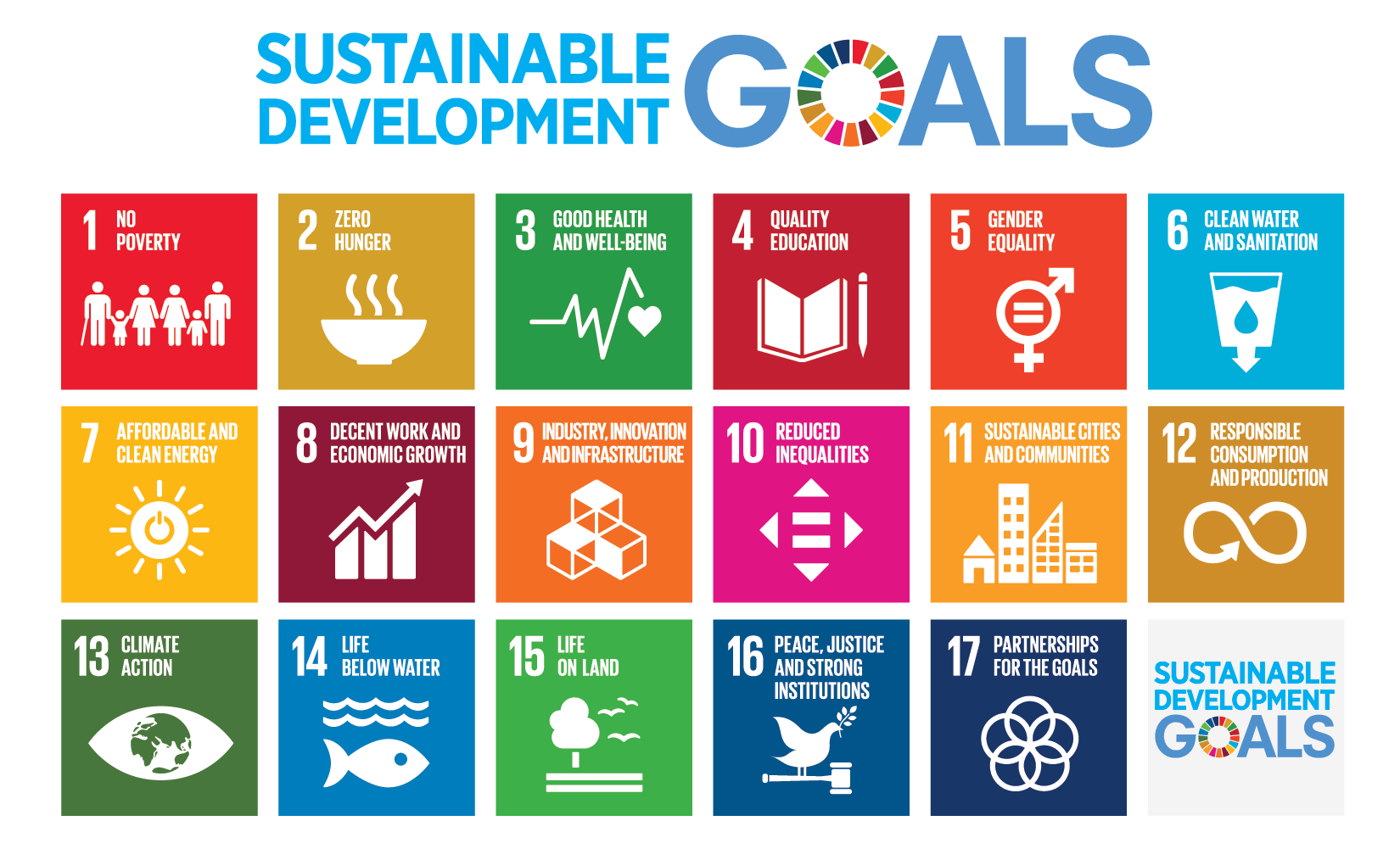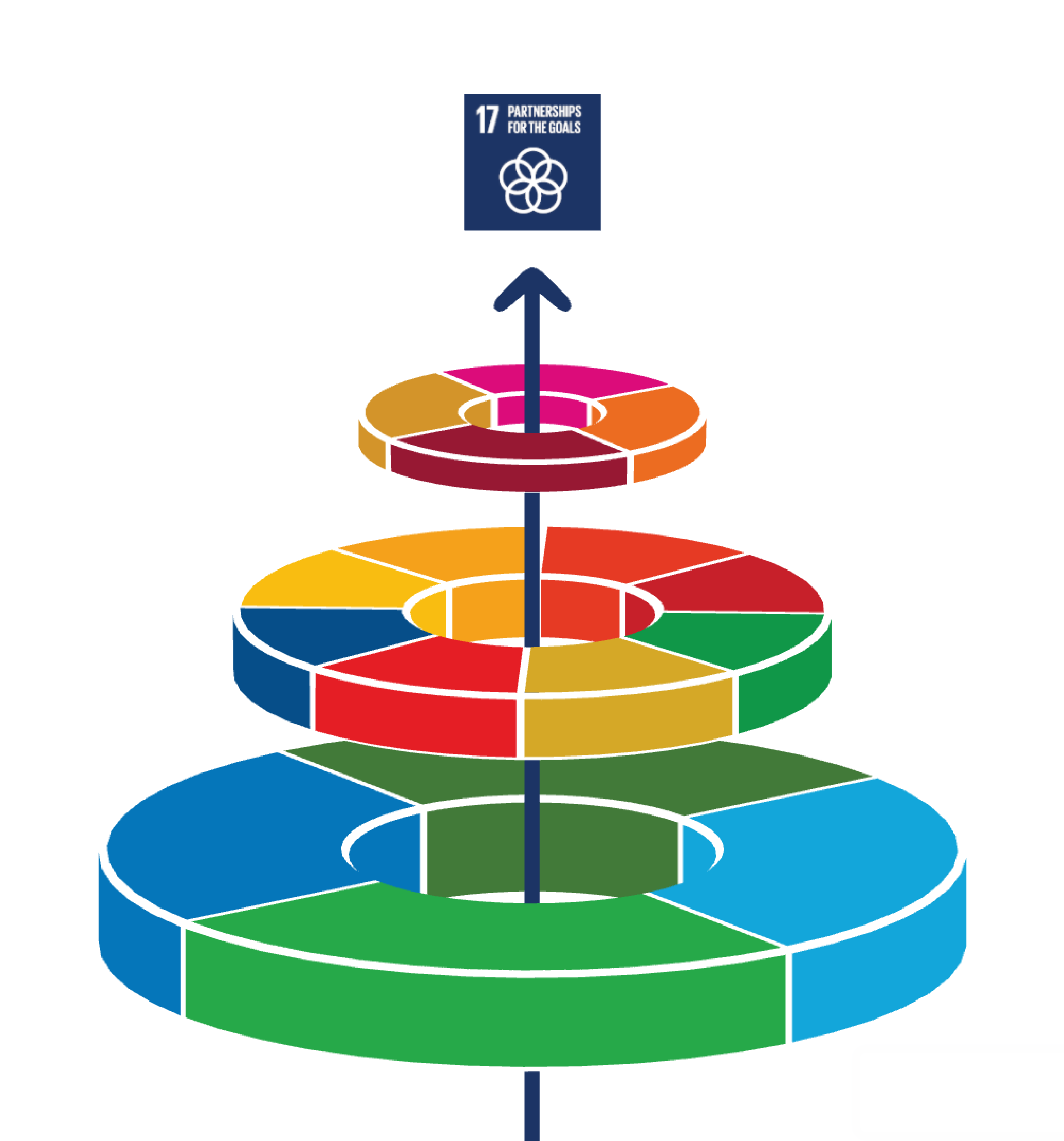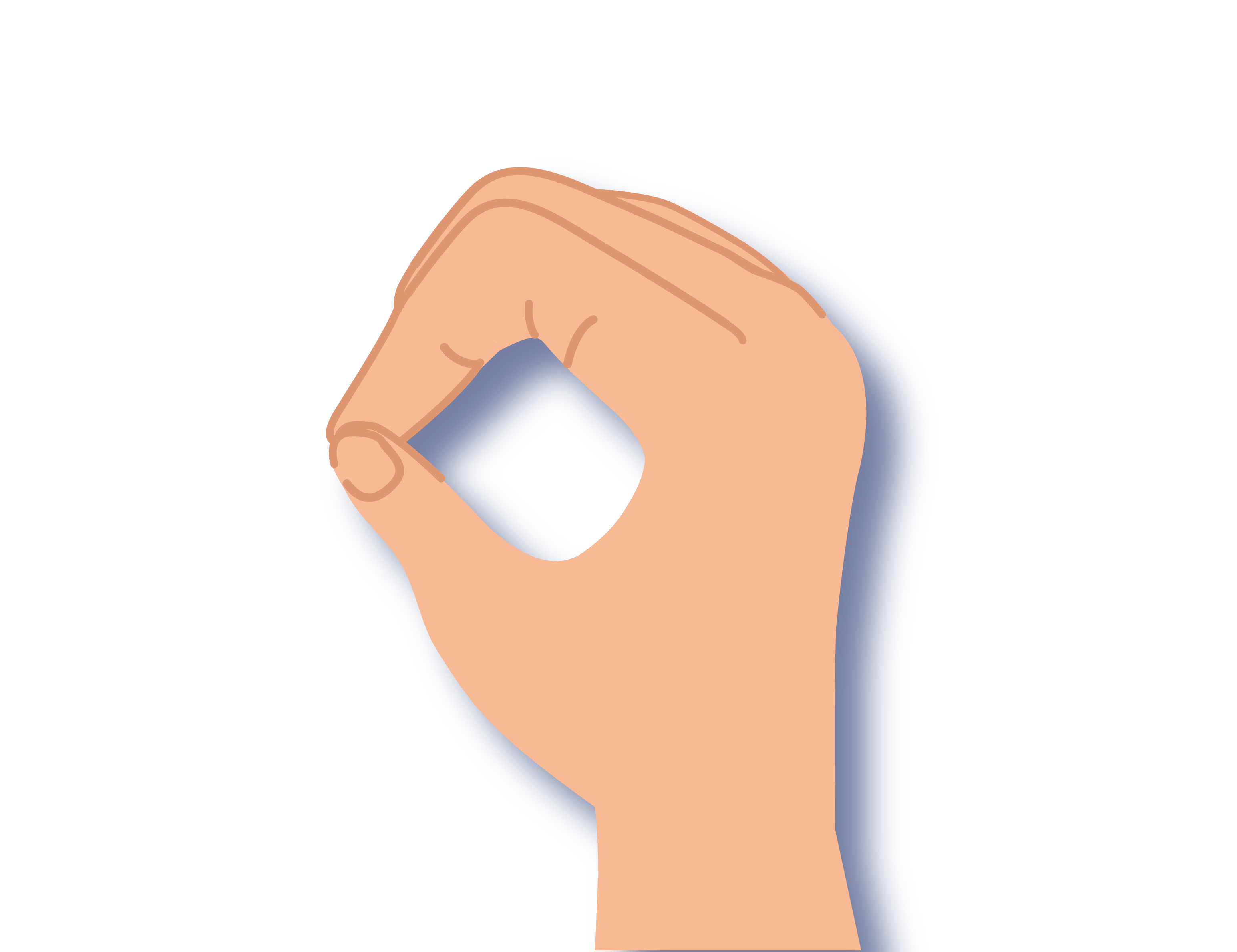| Society |
|
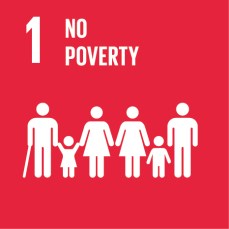 |
GOAL 1: NO POVERTY
Economic growth must be inclusive to provide sustainable jobs and promote equality.
What’s the goal here? To end poverty in all its forms everywhere by 2030.
- More than 700 million people, or 10% of the world population, still live in extreme poverty and struggle to meet the most basic needs, such as health, education, and access to water and sanitation,. Most people in sub-Saharan Africa live on less than $1.90 a day (i.e. below the poverty line).
- Poverty has many dimensions, but its causes include unemployment, social exclusion, and the high vulnerability of certain populations to disasters, diseases and other phenomena which prevent them from being productive.
- 55% of the world’s population have no access to social protection.
- More than 90% of deaths due to disasters occur in low and middle-income countries.
Actions to achieve this goal
- Get everyone involved. Make regular outreach day trips to areas in need.
- At birthday parties, encourage guests to donate money to your chosen charity instead of buying a birthday gift.
- Buy fair-trade products to support a sustainable trade system, which seeks to ensure that employees are rewarded fairly for their work.
- Teach a skill or short course at a community centre (e.g. computer skills, building a resume, preparing for job interviews).
- Buy clothing or other products from stores that donate a portion of their money to charities.
- Sponsor a child to give it access to food, education and health.
- Clean out your pantry. Fill a box with non-perishable foods and donate it to a food bank.
- Generate discussion about poverty. Write a blog, or write an article in a local newspaper.
- Volunteer to work in homeless shelters. Your time can be more valuable than your money.
- If possible, give something to every beggar on the street. Giving an apple, a bottle of water, some small change or even just a smile is better than not giving at all.
|
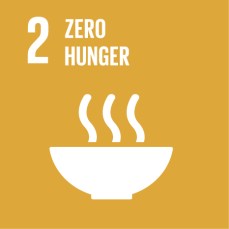 |
GOAL 2: ZERO HUNGER
The food and agriculture sector offers key solutions for development, and is central for hunger and poverty eradication.
What’s the goal here? To end hunger, achieve food security and improved nutrition, and promote sustainable agriculture.
- More than 800 million people suffer from hunger worldwide, the vast majority of whom live in developing countries.
- Climate-induced shocks, civil insecurity and declining food production have all contributed to food scarcity and high food prices. Investment in the agriculture sector is critical for reducing hunger and poverty, improving food security, creating employment and building resilience to disasters.
- A profound change in the global food and agriculture system is needed to nourish today’s 800 million hungry, plus the additional 2 billion increase in global population expected by 2050.
Actions to achieve this goal
- Spread the word. The more ideas are spread to combat hunger, the more people act.
- Donate non-perishable foods to charities.
- Support food assistance programs. They provide over 20 times more food than food banks, food pantries and soup kitchens.
- Provide food for schools in developing countries. Attendance increases at schools which provide lunch for their children.
- If you pay your workers only the minimum wage, you can support them in other ways, by helping with their education and housing needs.
- Many emergency food providers need help from people with accounting, social media or writing skills. If you have such skills, volunteer your expertise once a week.
- Keep a bag of apples or some tinned food in the car to give to street beggars.
- Many hungry people hesitate to ask for help because they feel ashamed of their poverty and are afraid they will be looked down on. Speak up about misconceptions and educate others about the realities of hungry persons.
- Read a book on hunger. A greater understanding of its causes will better prepare you to make a difference.
- Support local farmers by buying your food at farmers’ markets.
|
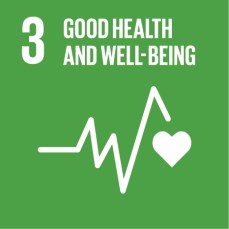 |
GOAL 3: GOOD HEALTH AND WELL-BEING
Ensuring healthy lives and promoting well-being for all at all ages is essential to sustainable development.
What’s the goal here? To ensure healthy lives and promote well-being for all at all ages.
- At least half the world’s population are still without access to essential health services. Concerted efforts are required to achieve universal health coverage and sustainable financing for health, to address the growing burden of non-communicable diseases, and to tackle antimicrobial resistance and environmental factors contributing to ill health.
- Spending $1 billion in immunization coverage can save 1 million children’s lives each year.
- Ensuring healthy lives for all requires a strong commitment, but the benefits outweigh the cost. Healthy people are the foundation for healthy economies.
Actions to achieve this goal
- Don’t smoke.
- Be more active. Go for walks at lunchtime or cycle to work.
- Eat a healthy diet and drink a lot of water.
- Help to increase awareness of, and support for, mental health ailments such as depression, substance abuse or Alzheimer’s (one of the causes of Dementia).
- Heart disease remains the world’s number 1 killer. Educate yourself on the causes and symptoms of heart disease and other Non-Communicable Diseases.
- HIV/AIDS is not over. Protect yourself. Test yourself.
- Never stop learning. Engaging in work or educational activities helps lift older people out of depression. Try learning a new language, or reading a lot, or setting up a book club.
- Breastfeed. Breastfeeding is natural and the best source of nourishment for babies. Breastfeeding protects infants from illnesses, has long-term benefits for children, and benefits mothers.
- Get enough sleep.
- Make time for yourself and your friends.
|
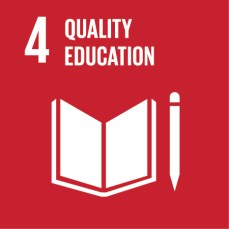 |
GOAL 4: QUALITY EDUCATION
Obtaining a quality education is the foundation to improving people’s lives and sustainable development.
What is the goal here? To ensure inclusive and quality education for all and promote lifelong learning.
- Education enables upward socioeconomic mobility and is a key to escaping poverty. Education is also essential to achieving many other SDGs.
- Education empowers people everywhere to live more healthy and sustainable lives. Education is also crucial to fostering tolerance between people, and contributes to more peaceful societies.
- Globally, 262 million children and adolescents remain out of school. 617 million lack minimum proficiency in reading and mathematics. 750 million adults still remain illiterate, two thirds of whom are women.
- Adequate infrastructure and teacher training play a critical role in the quality of education. However, more than half of the schools in sub-Saharan Africa do not have access to drinking water, electricity, computers and the Internet.
Actions to achieve this goal
- Teach your native language to migrants in a youth centre or elsewhere.
- Provide food at schools to increase attendance.
- Educate your children about the power of education, as many young people find it difficult to appreciate its tangible benefits.
- Show films or TV shows that are educational as well as entertaining for children.
- Take education outside the school and keep it fun. Travel. Take children on day trips to planetaria or museums.
- Support charities that are working in education in the poorest parts of the world.
- Donate books to public libraries or public schools that need them.
- Share success stories, including stories that failed to make the headlines.
- Share your skills with those who need them.
- In many countries, girls are taken out of school early in order to get married. Start conversations that allow for problems to be openly discussed and solutions to be found.
|
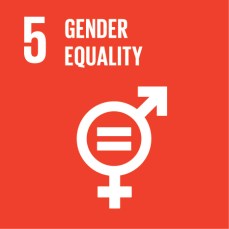 |
GOAL 5: GENDER EQUALITY
Gender equality is not only a fundamental human right, but a necessary foundation for a peaceful, prosperous and sustainable world.
What’s the goal here? To achieve gender equality and empower all women and girls.
- Women and girls represent half of the world’s population and therefore also half of its potential. But gender inequality persists everywhere and holds back social progress. In 2018, women only held 27% of managerial positions worldwide. Across the globe, women and girls perform a disproportionate share of unpaid domestic work.
- Women and girls around the world continue to experience violence and cruel practices. 18% of ever-partnered women and girls aged 15–49 years have experienced physical or sexual partner violence, or both.
- Disadvantages in education translate into lack of access to skills and limited opportunities in the labour market. Women and girls’ empowerment is essential to expand economic growth and promote social development.
Actions to achieve this goal
- Increase gender representation in areas of leadership in the workplace.
- Practice and demonstrate to children equal decision-making processes at home.
- Encourage schools to provide scholarships for girls.
- Remonstrate with media outlets (e.g. advertising companies, movie production houses) about the harmful impact of portraying women as inferior, less intelligent and less competent than their male counterparts.
- Use mentoring and coaching to help women build their confidence and develop their careers.
- If you are a woman, know your rights and stand up for them.
- Make flexibility and work-life balance a part of your company’s culture.
- Make gender equality part of training and education. Young people should be supported in choosing jobs that advance their future, regardless of their gender.
- Gender equality starts at home.
- Sponsor a girl child who needs a role model.
|
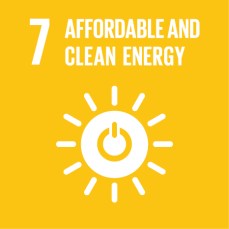 |
GOAL 7: AFFORDABLE AND CLEAN ENERGY
Energy is central to nearly every major challenge and opportunity.
What’s the goal here? To ensure access to affordable, reliable, sustainable and modern energy for all.
- A well-established energy system supports all sectors, from businesses, medicine and education to agriculture, infrastructure, communications and high-technology.
- For many decades, fossil fuels such as coal, oil or gas have been major sources of electricity production. But burning carbon fuels produces large amounts of greenhouse gases which cause climate change and have harmful impacts on the environment and on our overall well-being.
- Nearly 90% of people now have access to electricity, but reaching the unserved will require increased efforts.
- The health and well-being of some 3 billion people are adversely impacted by the lack of clean cooking fuels which forces them to use fuels such as wood, charcoal, dung and coal, which cause indoor air pollution.
- Global electricity use is rising rapidly. Without a stable electricity supply, countries will not be able to power their economies.
Actions to achieve this goal
- Cover pans with a lid. This reduces the amount of energy required to boil water by 75%.
- Turn off electronic equipment such as televisions and computers when going on holiday.
- Turn lights off in rooms that aren’t being used. When you switch your lights off, even for a few seconds, you save more energy than you use in turning on a light, regardless of the bulb type.
- Efficient home designs also combine energy efficient constructions, appliances and lighting, such as solar water heating and solar electricity.
- Use energy-efficient lightbulbs and operate your household appliances at low-energy settings.
- Turn down the thermostat and fill your house with carpets to retain warmth.
- Support solar power projects for schools, homes and offices.
- Only fill kettles with the amount of water you need.
- If you are installing air conditioning, consider using solar air conditioning.
- Seek advice and guidance on energy efficiency in historic buildings.
|
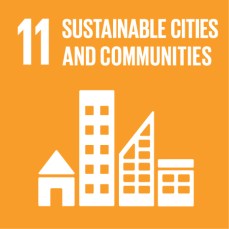 |
GOAL 11: SUSTAINABLE CITIES AND COMMUNITIES
There needs to be a future in which cities provide opportunities for all, with access to basic services, energy, housing, transportation and more.
What’s the goal here? To make cities inclusive, safe, resilient and sustainable.
- The world is becoming increasingly urbanized. Since 2007, more than half the world’s population has been living in cities, and this share is projected to rise to 60% by 2030 and 68% by 2050. Cities and metropolitan areas are powerhouses of economic growth, contributing about 60% of global GDP.
- However, inequality is a major concern in cities. 25% of urban residents live in slum-like conditions (2018). 2 billion people do not have access to waste collection services. Only half (53%) of urban residents have convenient access to public transport (2018). 90% of urban residents breathe polluted air.
- Cities occupy just 3% of the Earth’s land surface, but account for 60–80% of its energy consumption, 70% of its carbon emissions and over 60 % of its resource use.
- Many cities are also more vulnerable to climate change and natural disasters due to their high population density, so building urban resilience is crucial for avoiding human, social and economic losses.
Actions to achieve this goal
- Start a car-pooling system online, internally in the office, or in areas that don’t have access to reliable public transport.
- Generate awareness of your city’s carbon footprint and suggest ways to improve it.
- Advocate and support the development of sport and recreational spaces. They help build stronger, healthier, happier and safer communities.
- Use public transport, city bikes and other environmentally friendly transport modes.
- Research, encourage and raise awareness for greater information transparency within your community.
- Reach out to underprivileged areas. Integrate people of different classes and ethnicities and include them in decision-making processes on subjects such as living conditions and pollution that are directly relevant to them.
- Reduce fares for public transport in cities that face the challenge of congestion.
- Learn more about the cultural and natural heritage of your area. Visit heritage sites and post about these in a positive light.
- Gather in small community groups to discuss ways to ensure safe and accessible public spaces, especially for women, children, elderly people and people with disabilities.
- As a company, offer reduced fees for hiring city bicycles.
|
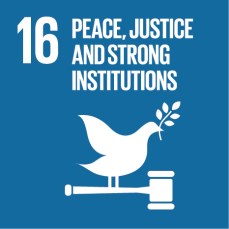 |
GOAL 16: PEACE, JUSTICE AND STRONG INSTITUTIONS
Access to justice for all, and building effective, accountable institutions at all levels.
What’s the goal here? To promote peaceful and inclusive societies for sustainable development, provide access to justice for all, and build effective, accountable and inclusive institutions at all levels.
- Peaceful, just and inclusive societies are necessary to achieve the Sustainable Development Goals (SDGs). People everywhere need to be free of fear from all forms of violence and to feel safe as they go about their lives, whatever their ethnicity, faith or sexual orientation.
- Today, about 26 million people are refugees, over 41 million people have been internally displaced, and at least 4 million people are stateless.
- In order to advance the SDGs, we need effective and inclusive public institutions that can deliver quality education and healthcare, fair economic policies and inclusive environmental protection. To achieve peace, justice and inclusion, it is important that governments, civil society and communities work together to implement lasting solutions to reduce violence, deliver justice, combat corruption and ensure inclusive participation at all times.
Actions to achieve this goal
- Make your voice heard and vote in your country’s elections.
- Participate in your country’s decision-making processes in an informed manner.
- Stop violence against women. If you see it happening, report it.
- Find value in different demographics, thoughts and beliefs for an inclusive society.
- Demonstrate a peaceful environment at home.
- Be passionate about your country’s decisions, but remain peaceful when standing up for what you believe in.
- Read, write or make a video to stand up for peace.
- Spend some time each week quietly reflecting on how you would like to relate to others.
- Volunteer for local anti-violence organisations and outreach programmes.
- Host or take part in local community events (e.g. sports events, barbecues, festivals) where people from different backgrounds can get to know one another in safe environments.
|
